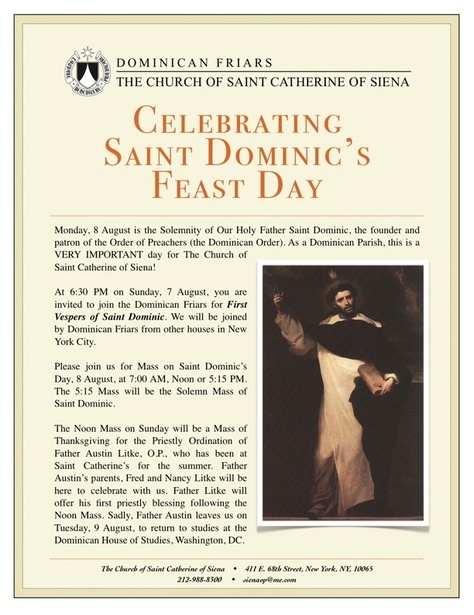Tag: St Dominic
Prayer: raising one’s heart and mind to God
 It would be a pity to forget last Sunday’s first
It would be a pity to forget last Sunday’s first
reading where we read of Moses’ role as mediator of God’s saving plan.
book of Exodus we were reminded that Moses had concern for the salvation of his
unbelieving countrymen, and therefore he asked that God show His compassion
towards sinful Israel (see Exodus 32-34). The raising of Moses’ hands in
prayer, while dramatic, is not a biblical example of a magical Wizard of Oz. It is, however, a posture that invites all of us to pray using our God-given body and as a group as it is more effective in
expanding our own heart for God’s grace and power.
as it is given to us in the Catechism of the Catholic Church cites Saint John
Damascene’s definition of prayer as “…the raising of one’s mind and heart to
God or the requesting of good things from God.” The Catechism speaks of
biblical types of prayer, such as ‘the prayer of Moses [that] responds to the
living God’s initiative for the salvation of His people. It foreshadows the
prayer of intercession of the unique mediator, Christ Jesus’ (2593).
raise our hands in prayer? What posture of prayer do we use? Do we use our body in praying? Are you too stiff and scared in your manner of praying?
the “Nine Ways of Prayer” given to us by Saint Dominic de Guzman is the raising
of hands in prayer. The 6th and 7th Ways of Prayer are directly connected with the living of the Beatitudes and the spirituality of the Cross. Outstretched hands in the form of a cross became a familiar way of praying for Saint Dominic (and his followers) that he believed was inspired by God not only at Mass but also when he was praying for someone’s healing or being being raised from the dead.
Saint Dominic de Guzman
Blessed Cecilia’s description of Saint Dominic is how we know what he looked liked. And we have to be grateful for ancient chroniclers! They not only feed our curiosity but they show us concrete expressions of how God works through humanity … Descriptions like this one help us imagine what a person 8 centuries looked which helps to connect more closely to his reality. Blessed Cecilia wrote:
middle height and slender figure, of handsome and somewhat ruddy countenance,
his hair and beard of auburn, and with lustrous eyes. From out his forehead and
between his eye brows a radiant light shone forth, which drew everyone to
revere and love him. He was always joyous and cheerful, except when moved to
compassion at anyone’s sorrows. His hands were beautiful and tapering; his
voice was clear, noble, and musical; he was never bald, but kept his religious
tonsure entire, mingled here and there with a few grey hairs.” (From the
Legend of St. Dominic by Bl. Cecilia Cesarini)
Translation of Saint Dominic
 Rejoice to the full in the glory that is yours,
Rejoice to the full in the glory that is yours,
alleluia, and give thanks to God, alleluia, who called you to his kingdom,
alleluia, alleluia, alleluia.
Church by the merits and teaching of Saint Dominic, your confessor and our
father. By his prayers grant that the Church may never lack for temporal help,
and may grow ever richer in spiritual blessings.
Mass it is prayed:
Dominic to enrich the church by renewing the apostolic way of life. Disciple of
Christ, the very Christ who became poor for our sake, Dominic called the lost
and the wandering home by preaching the Good News. He gathered a band of
preachers together. Nourished by the light of sacred study they gave themselves
without reservation to the proclamation that Jesus Christ is Lord.
memorial for the Order of Preachers is not often celebrated anymore because it
conflicts with the larger and more significant observance of Our Lady Help of
Christians. But originally this liturgical observance marked the first time the
mortal remains of Saint Dominic were moved having been first buried in the
Church of Saint Nicholas of the Vineyards, Bologna, Italy. Because of the healings at Dominic’s
intercession made his sons apprehensive to accept the miracles, Pope Gregory IX
order that Dominic’s body be moved to a marble sepulchre. The translation took place on
Pentecost, May 24, 1233, which marked the beginning of the canonization
process. At the conclusion of the process Pope Gregory IX canonized Dominic a
saint on July 3, 1234. In 1267,
Dominic’s body was moved a second time, to his present tomb.


